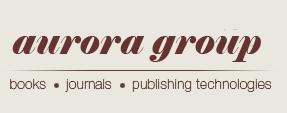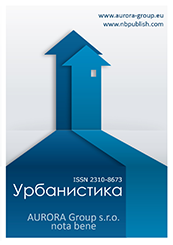Проектирование и архитектура
Reference:
Kuz'menko, Y.E. (2025). Measures to Improve the Durability of Enclosing Structures Regarding the Influence of Vapor Permeability and Condensation of Air Moisture. Urban Studies, 1, 1–9. https://doi.org/10.7256/2310-8673.2025.1.39905
Abstract:
Increasing the durability of the materials used is the most urgent task in the modern field of architecture and construction. In particular, the issue of increasing the durability of structures by reducing the influence of vapor permeability and air moisture condensation is particularly relevant. The purpose of the article is to analyze possible measures and technical solutions aimed at improving the durability of enclosing structures by reducing the influence of vapor permeability and condensation of air moisture. The object of the study is fencing structures. The subject of the study is the influence of vapor permeability and condensation of moisture in relation to enclosing structures. The work uses such methods of scientific research as analysis and synthesis, as well as the results of other domestic and foreign scientific materials. The scientific value of the article lies in the attempt of a comprehensive study of the issue and systematization of knowledge regarding the issue of increasing the durability of enclosing structures. The author not only conducts research on the effect of vapor permeability and condensation of moisture in relation to enclosing structures, but also provides basic formulas for calculating optimal values when designing structures. In addition, the paper describes the main measures, the consideration of which is necessary for the implementation of the most rational decisions in the design of structures. The scientific value of the article lies in the description of unique methodological ideas aimed at increasing the durability of enclosing structures. The practical value of the article lies in the possibility of using the presented materials at real production facilities, which are aim at reducing the influence of vapor permeability and moisture condensation on the enclosing structures.
Keywords:
water vapor, service life, humidity, construction, condensation, vapor permeability, durability, protection, enclosing structure, thermal protection
Design and Environment
Reference:
Karpova, E.V. (2025). Mental maps and representation of the city: Orenburg research experience. Urban Studies, 1, 10–25. https://doi.org/10.7256/2310-8673.2025.1.72215
Abstract:
The article explores the potential of artistic representation of urban space using the method of mental maps — drawn images reflecting the perception of the urban environment through personal images and symbols. The need to focus on the formation of the city's identity and the specifics of its perception by residents as an important aspect of urban subjectivity is indicated. The paper proposes a typology of mental maps based on their artistic and emotional characteristics, which allows classifying maps by the ways of reflecting individual and collective ideas about urban space. The object of our research is the artistic representation of the city, which includes methods of visualization and symbolic display of the urban environment. Mental maps are the main research tool — a unique way of recording a subjective view of urban reality. Of particular interest is the study of mental maps with an emphasis on the artistic representation of the urban environment, where each image of the city becomes a creative interpretation reflecting personal perception and values. Using the city of Orenburg as an example, this study aims to identify key aspects that form specific images of the city and to develop a typology of mental maps based on their artistic and emotional characteristics. The methodological basis was the creation and analysis of mental maps of the city of Orenburg. The empirical base of the study also includes the results of a survey conducted among Orenburg residents. The novelty of the study includes the author's approach to interpreting mental maps of Orenburg from the point of view of their individuality and the construction of a typology that takes into account their role in the artistic representation of the city. The innovation lies in considering the mental maps obtained during the study as a unique artifact describing the space of the city and its inhabitants. The prospects include the potential of the proposed tools, including in connection with solving fundamental problems of understanding the specifics of the Orenburg space and its development. The article is aimed at studying mental maps as a key method of artistic representation of the urban environment, contributing to a deeper understanding of the city's identity. The study demonstrates how mind maps can serve as a tool for visualizing subjective experience and perception of a city, opening up new opportunities for studying its cultural and social specifics.
Keywords:
image of Orenburg, identity of the citizen, identity of the city, perception of the city, artistic representation, representation of the city, image of the city, urban environment, phenomenology of the city, mental maps
Транспорт и коммуникации
Reference:
Akopyan, G.A., SHevchenko, P.V. (2025). Awareness of users of urban public transport in the metropolis. Urban Studies, 1, 26–39. https://doi.org/10.7256/2310-8673.2025.1.72234
Abstract:
The subject of the study is the segmentation of urban transport users based on transport behavior, which makes it possible to clarify the strengths and weaknesses of user awareness work. The main hypothesis of the study is that users are underinformed due to the well–established practice of informing the public, namely, with a predominant focus on the mass media as an intermediary in the transmission of information. However, mass media can help convey information to as many people as possible, make the fact known to many, but their capabilities are limited in order to take into account the specifics of individual groups or categories of consumers of transport services in the process of informing. To solve the problem, it is proposed to explore options for segmentation of consumers based on the characteristics of the transport behavior of citizens, highlighting the frequency of transport use and the purpose of the trip as signs of segmentation that have the greatest similarity.The study uses sociological methods – expert interviews, focus groups and a questionnaire survey of users. The results of the study were obtained explaining the shortcomings of the traditional information policy – informing without taking into account the specifics of the target groups of users of public transport and road transport infrastructure, the lack of discussion of problems in information messages. The strengths and weaknesses of the information work of the Moscow Department of Transport have been identified. The management of the Deptrans information unit is recommended to provide, along with general information to all residents of the capital (by transmitting messages to all media), information messages prepared for individual target groups, having previously identified such groups based on an analysis of the transport behavior of residents of Moscow and the Moscow region. Areas of work to eliminate deficits: 1. The official website of Deptrans, its Telegram channels and chatbot "Alexandra", which are not popular among residents of the capital. 2. The formality of information ("reporting") instead of considering problems taking into account the opinions of various groups of users of urban transport. 3. Using the experience of the world's megacities: • User surveys by independent organizations • Regular interviewing of experts, both individual and institutional, i.e. from independent, non-profit organizations• Attitude to planned projects 4. Proactive informing – both of a positive and preventive nature – in which news that is interesting to specific groups of users of OT and DTIM will be distributed by them (through word of mouth channels).
Keywords:
interviewing, questionnaire survey, focus group, communication, user awareness, satisfaction with the trip, transport behavior, urban public transport, urban transport users, Segmentation
Культурное наследие
Reference:
Kuznetsova-Bondarenko, E.S. (2025). Synthesis of stained glass art and architecture in the semiotic space of the Victoria Cottage in the city of Feodosia. Urban Studies, 1, 40–50. https://doi.org/10.7256/2310-8673.2025.1.72401
Abstract:
The subject of the study is stained glass art and architecture of the modern and eclectic era. The object of the analysis is the cottage "Victoria", located on the embankment of the city of Feodosia.The article considers the synthesis of architectural forms and compositional features of stained glass works on the example of the cottage "Victoria". Also, an art criticism and semiotic analysis of stained glass windows is carried out, their role in shaping the architectural appearance of the building and its place in the urban landscape of Feodosia is considered. This study represents a new approach to the analysis of stained glass works in the architectural space of the Victoria cottage, considered in the context of the cultural landscape of the city of Feodosia. The problems of this research are dealt with by such sciences as cultural studies, art history, philosophy, semiotics and history, therefore, its interdisciplinary nature should be noted. The culturological method is used as the main research methods in this scientific article, the method of periodization and the method of art criticism analysis are applied. The scientific novelty of the study lies in the fact that for the first time an analysis of the synthesis of architecture and stained glass in the Villa Victoria building was carried out, and a semiotic analysis of stained glass works was performed. The stylistic features manifested in architectural forms and artistic images of stained glass windows in the design of exteriors and interiors in the modern era are studied. Summing up, after analyzing the cottage "Victoria", we can say that: 1. The cottage "Victoria" is a unique monument of Art Nouveau architecture and eclecticism in the cultural space of the Crimea. 2. The stained glass works at the Victoria cottage were performed much later than the construction of the building, but despite the difference in eras, they look harmonious and become an accent on the facade of the building and in its interior. 3. The semiotic content of the stained glass composition reflects the cultural space not only of the Villa Victoria building, but also of the city of Feodosia as a whole.
Keywords:
ornament, composition, cottage Victoria, Feodosia, eclecticism, Art Nouveau, stained glass, architecture, synthesis of arts, accent
Культурное наследие
Reference:
Dubrovina, N.P., Kosyakova, E.D. (2025). The development and preservation of the historical buildings of the villages of the Podporozhsky district on the example of the village of Kurpovo. Urban Studies, 1, 51–66. https://doi.org/10.7256/2310-8673.2025.1.73291
Abstract:
This authors studied the monuments of wooden architecture of Podporozhye, Leningrad region, preserved in their original places. The article examines the characteristics of the historical territory of the village of Kurpovo in the Vazhinsky urban settlement of the Leningrad region, known for the location of a unique wooden architecture object here, the Church of the Resurrection of Christ in the Vazhinsky churchyard. This study is aimed at studying not only individual monuments, but also their historically developed environment. The article examines the stages of formation of the village of Kurpovo, the features and characteristics of the historical landscape (natural and man-made), reveals the valuable historical buildings of the village with the definition of morphotypes and compositional analysis. The object of the study is the historically developed wooden building in the village of Kurpovo, Podporozhsky district, from the 17th century to the first half of the 20th century (including objects of religious wooden architecture, residential and outbuildings). The authors proceeded to the analysis of historical, archival and bibliographic materials, urban planning, regulatory, social, natural, recreational and tourist conditions of the Podporozhsky district and its territories; conducted field and desk studies of the development of the village of Kurpovo. As a result, based on the methodology for classifying historical and cultural territories as cultural heritage sites, the requirements of urban planning of Kurpovo village are proposed; general regulation of cultural heritages sites depending on their historical, cultural, urban planning, landscape features is also sketched. The authors of the article propose requirements for new buildings construction within heritage sites that allow preserving the valuable characteristics of the cultural landscape of the village of Kurpovo. The results of the article can be used to create projects for the restoration of wooden architecture in Kurpovo village Podporozhsky district; when creating projects for the protection of historical territories or assigning the status of a landmark to Kurpovo village; as well as when choosing methods for the development and preservation of historical settlements.
Keywords:
wooden architecture, historical environment, cultural landscape, morphotype, compositional analysis, urban planning regulation, conservation zoning, temple architecture, residential development, restoration
 This work is licensed under a Creative Commons Attribution-NonCommercial 4.0 International License.
This work is licensed under a Creative Commons Attribution-NonCommercial 4.0 International License.









 © 1998 – 2025 Nota Bene. Publishing Technologies. NB-Media Ltd.
© 1998 – 2025 Nota Bene. Publishing Technologies. NB-Media Ltd.




